How to find the freshest seafood at the fish market
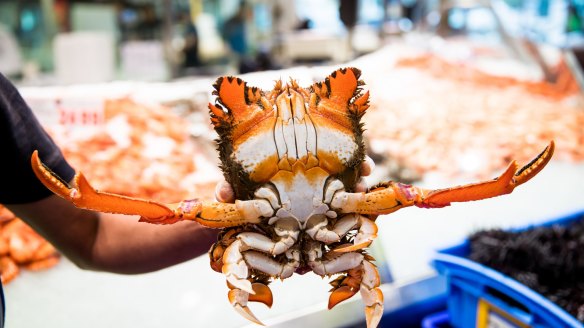
Lined up in a neat row and shining under the gleaming lights, that fillet of salmon looks OK, doesn't it? It's on ice and the fishmonger has told you that it's fresh, so she's apples, right?
Not if you're Donovan Cooke.
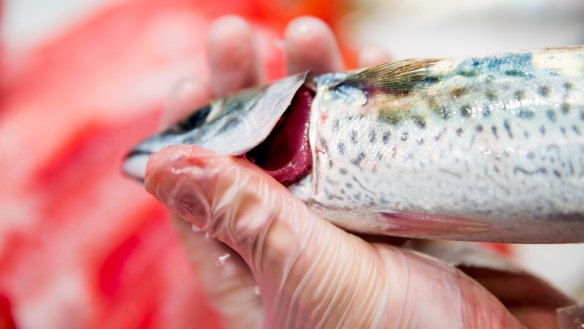
"If you go to the supermarket and you want an apple or an orange, you touch it first, don't you? It's the same shit," the executive chef of Melbourne's The Atlantic says. "Are you buying [that fish]? Tell them you want to sniff it – it might put their noses out of joint, but that's why you become a regular."
He's got a point. When you're shelling out $15 for a single fillet, or springing for a whole fish, you want to be able to make an informed choice.
Fish remains a weirdly daunting thing for many home cooks, and the snapper-salmon-tuna line-up remains a familiar, albeit delicious, comfort zone. And maybe that glass cabinet case is a barrier to branching out into different aquatic comestibles.
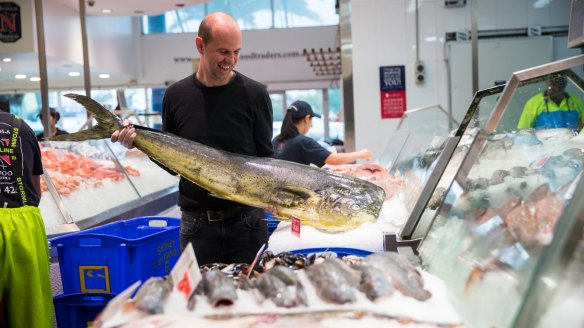
"I tell people to take the romance out of it, and just use common sense," Cooke says. "You've always got to make friends with your fishmonger. If you go for a whole fish, the gills should be bright red, the eyes should be bright and shiny, and the fish should be slimy all over – which means it's only been out of the water for a day – and there should be no odour."
Clear eyes, full slime, can't lose.
"If the fish isn't fresh, they'll poke the eyes out. If you get a fish with no eyes or gills, there's a good chance that it's not fresh and it's been washed in water with vinegar to take the smell away."
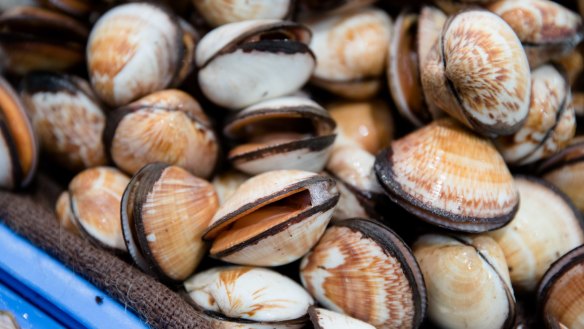
For fillets, you want to avoid that slime and any stickiness, and the texture should be firm.
"For a piece of snapper, if there's no skin and the blood line is brown, it's an indication that's not fresh. Tuna should be a deep red vivid colour, again with zero aroma. Your nose is key."
Seafood specialist, Brent Savage, of Barangaroo's Cirrus restaurant, meet us at Sydney's Seafood Market to get even more hands-on.
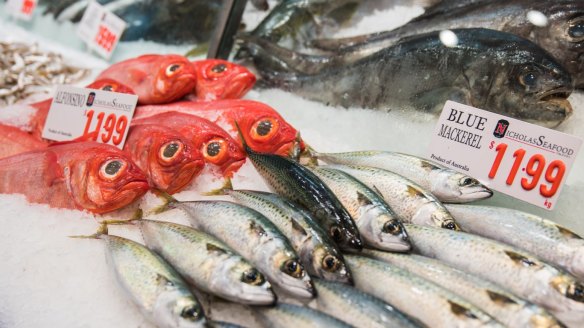
Once a fish is caught, there is a 48-hour window to use it, he says. Like Cooke, he looks for a silky slime and red gills. He prods the fish and reckons mackerel is the catch of the day.
"It's quite still, so it's still in rigor mortis, which is a sign that it's really fresh. The ones up the back are softer, so it's likely that they are older."
He only uses whole fish, as most fishmongers won't dry fillet.
"Most put everything under water and water is pretty much the enemy in terms of freshness. Once you put fresh water on a product from the sea, you're starting to f--- with it. There's chlorine and stuff that will have an effect on how the fish feels and works."
Little red barbounias with sparkling eyes also pique his interest (bright eyes are more important in smaller species), along with bonito (the oily flesh means it will feel softer than other fish) and tiny super fresh whiting (a rare treat, he says).
Moving on to crustaceans: crabs should be bought alive and kicking. Literally.
"This is what you want," Savage says, gingerly holding an ultra active spanner crab that is attempting to swing and second his right index finger.
"Anything moving too slowly means that it's been out for too long. For the live tanks [crabs, lobsters, abalone], it's the same thing – you're really looking for the water to be clear, and for the crabs to be moving around a lot."
From the lobsters prowling the tanks, pick the most active, and opt for cold-water species, avoiding the tropical ones.
A styrofoam case of marrons are decidedly more docile. Do they bite?
"Not today they don't," Savage says. "It's a shame – I don't think they are the best. These are a farmed product from Western Australia, and you want to buy based on activity [levels] and size – if you're going to spend $70 a kilogram, you may as well buy a sizeable one."
It's safe to get hands-on with calamari, too. Gently touch the suckers to see if they will stick to your hand or thumb. Cephalopods will maintain suction for a good 24 hours after being caught.
Flame clams may be the pretty cousin to mussels and pipis but they all play the same game; look for molluscs that sit open and close up when agitated.
Prawns are slightly more complicated, however.
"I would never buy cooked prawns," Savage says. "Basically, they've been caught on the boat, frozen, then cooked and frozen again, then defrosted before you get them. Only 10 per cent of prawns come in fresh, and 90 per cent are frozen, just because they deteriorate very quickly. I buy green and cook them – they've still been frozen at sea, but it maintains them to be the freshest they can be when you eat them."
A great example are Skull Island tiger prawns, from the Gulf of Carpentaria, which Savage serves at Cirrus.
"Just because they've been frozen doesn't mean they are shit – they're pretty amazing, actually."
Cheat's guide
For crabs, lobsters, marron and critters in the live tank: Look for clean water and lots of activity. Avoid slow moving or limp crustaceans.
For whole fish: Use your senses. Touch the skin and look for a healthy coating of sea slime. Check that the gills are bright red and that the eyes are bright and clear. Flesh should be firm and there should be no "fishy" smell.
For prawns: Green prawns will be fresher than cooked as they are less likely to be defrosted and re-frozen.
For clams, pipis and mussels: Look for molluscs that are sitting open and close up when touched.
A note on sustainability
Seafood sustainability is a complex issue that dives deeper than just that kind of fish you should eat. For example, the Australian Marine Conservation Society (AMSC) recommends eating small amounts of albacore tuna wild-caught in Australia but avoiding the same fish caught overseas as fishing practices endanger some shark species. Wild-caught Australian salmon is a better choice than Australian-farmed Atlantic salmon, as the caged fish are fed larger amounts of wild-caught fish. Wild-caught prawns from the Spencer Gulf and bay prawns from Queensland, plus Aussie-farmed prawns, are the best option, while imported farmed prawns from Asian countries should be avoided. Check your catch using the AMSC online search function.
The best recipes from Australia's leading chefs straight to your inbox.
Sign up